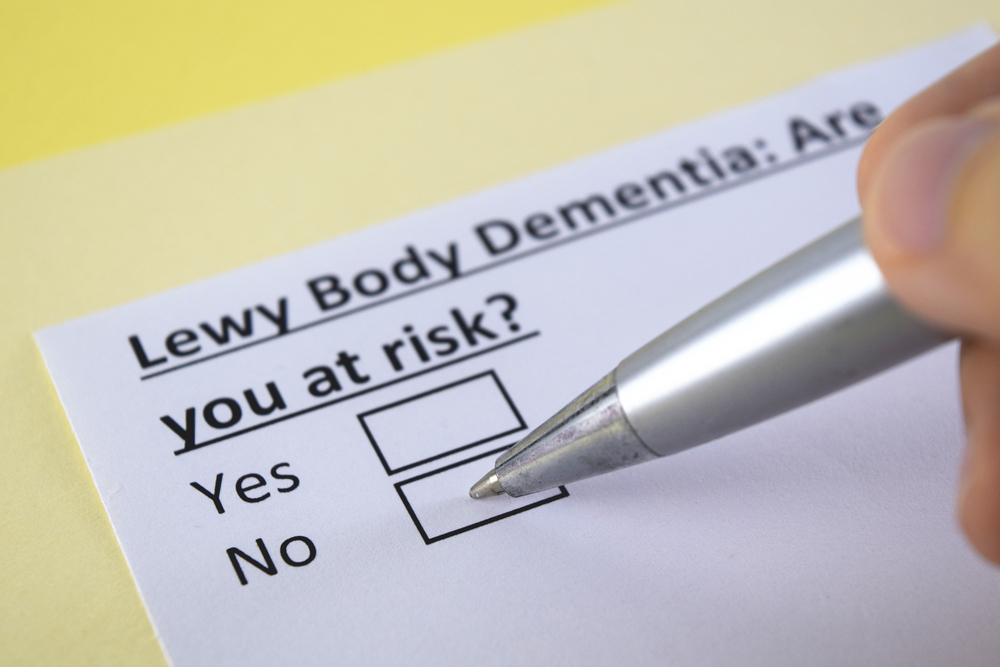Although Lewy body dementia is one of the most common forms of dementia, it’s not exactly a household term, and many people are unfamiliar with it. In the past, many clinicians have also not known much about it or how it’s distinct from other dementia types.
One advocate described how he researched dementia after his wife was diagnosed with Alzheimer’s disease in 1999. He told her physicians he believed his wife had Lewy body dementia and worried her treatment plan might be harmful. Her care team admitted they weren’t familiar with Lewy body dementia, and one even dismissed the possibility by saying, “never heard of it.”
In the past few decades, scientists have learned more about Lewy body dementia. Although there isn’t a cure, proper diagnosis can offer caregivers more direction on assisting their loved ones.
What Is Lewy Body Dementia?
With Lewy body dementia, a person develops a buildup of alpha-synuclein, a type of protein, in the brain. These deposits are called Lewy bodies and were named after the physician who first identified them in the 1920s, finding them in the brains of people with Parkinson’s disease.
Over time, Lewy bodies affect chemicals in the brain and change how the person moves and acts. It is one of the more common types of dementia, and it’s the second most common among dementia patients ages 65 and older.
More than one million people in the U.S. live with Lewy body dementia, and it’s more common in men than women.
Read More: How to Diagnose Dementia
Who Is at Risk for Lewy Body Dementia?
Scientists don’t fully understand what causes Lewy body dementia. Age is the greatest risk factor; the older a person becomes, the greater their risk for developing Lewy body dementia.
People with Parkinson’s are at greater risk for Lewy body dementia. Several sleep disorders, including REM sleep disorder, are associated with a higher risk.
Lewy body dementia is not considered a genetic disease, but having a close family member with Lewy body dementia does increase a person’s risk of also developing it. So far, scientists have identified several gene variants known to have an increased risk for developing the disease, but they still don’t understand a lot about these genes and why they are related to Lewy body dementia.
Lewy body dementia typically refers to either dementia with Lewy bodies or Parkinson’s disease dementia. The disease progression is distinct for these two types, but both begin quietly and often go unnoticed for years.
Read More: Does Melatonin Cause Dementia?
How Does Lewy Body Dementia Progress?
The progression depends on the type. People with Parkinson’s disease dementia typically display physical symptoms before they show changes to memory and cognitive function. In contrast, people with dementia with Lewy bodies tend to show cognitive symptoms first.
For people with dementia with Lewy bodies, the first stage is asymptomatic, and neither their patient nor family members are aware the disease is present. In the second stage, the person might show mild forgetfulness, and this can be easily confused with normal aging.
Stages three and four involve mild and then moderate cognitive decline. Daily activities such as organizing medicine or managing personal finances will become more difficult, and the person will need assistance.
Stage five is when the cognitive decline will affect the person’s ability to care for themselves and they will need help with meal preparation, feeding and bathing. In stage six, the person will show a change in personality and lose their ability to speak. This stage can last up to 2.5 years.
The final stage can also last up to 2.5 years. During this time, patients require constant care, and they cannot walk or talk.
Patients with Lewy body disease typically live seven to eight years after their diagnosis.
Read More: Does Exercise Prevent Dementia?
What Is it Like to Have Lewy Body Dementia?
About 80 percent of people with Lewy body dementia will experience visual hallucinations. It’s also possible, but not as common, to have nonvisual hallucinations in which the patient hears or smells things that aren’t really there.
People with Lewy body dementia experience a change in their ability to focus. This progresses to disorganized or illogical thinking.
Memory issues aren’t always present in the earlier stages, but a person might struggle with language and numbers.
Physical symptoms can be mild early on and begin with muscle rigidity or stiffness. The person might have a shuffling walk, balance problems or a stooped posture. They might have a tremor or a tendency to shake, even when they are sitting down.
Symptoms can also include reduced facial expressions as well as a smaller handwriting size. The person might speak with a weaker voice and have difficulty swallowing. Many of these symptoms can be mild in the early stages and go unnoticed by family members, particularly if the patient is trying to hide these changes.
As the disease progresses, the physical changes will become more profound, as will the cognitive changes. Patients often experience mood changes such as apathy, agitation or anxiety. They might seem depressed or paranoid.
Read More: How to Talk to Someone With Dementia
How Can Lewy Body Dementia Be Treated?
There isn’t a cure for Lewy body dementia, and treatment options are limited. Medical providers can provide some treatments to address specific symptoms, but relief can be short-term as the disease progresses.
It is essential for individuals with Lewy body dementia and their caregivers to work closely with a healthcare team experienced in managing dementia-related conditions.
The National Institute of Aging recommends forming a strong care team that can prescribe medication and provide physical therapy to help relieve symptoms. There are also support groups available to help family members cope with the challenges presented.
Read More: How to Treat Dementia No Matter What Age You Are














